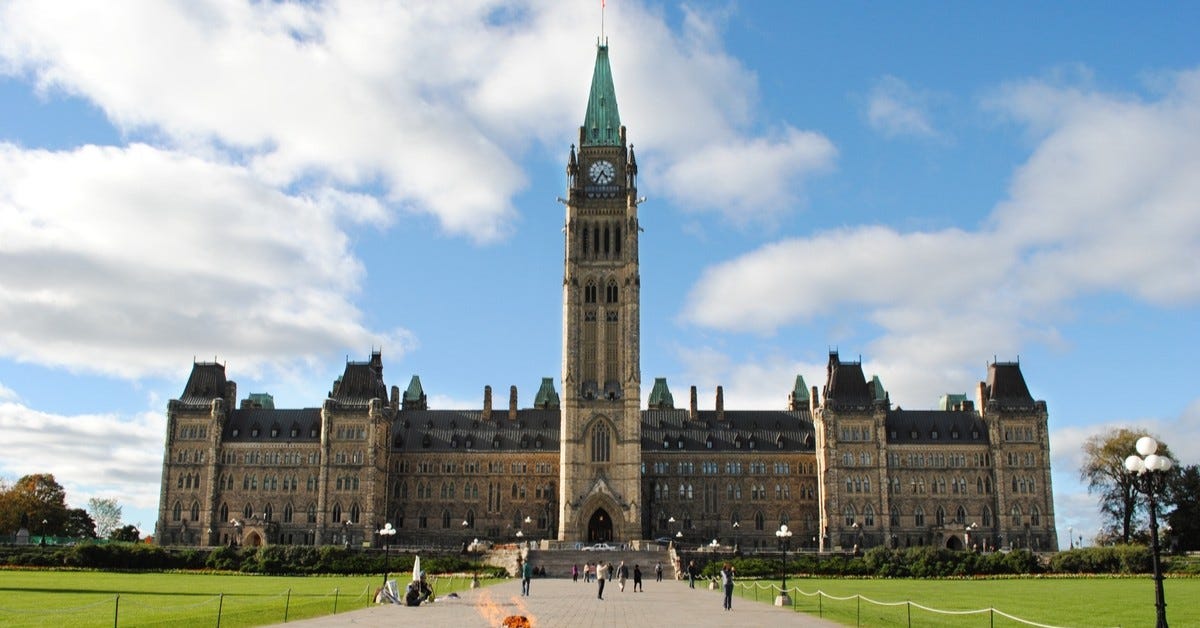Canada leads G7 in debt and government spending growth
Canada measured the largest increase in government spending and debt burden among G7 countries and nearly the highest among advanced countries over the last 10 years.
Author: Clayton DeMaine
Canada measured the largest increase in government spending and debt burden among G7 countries and nearly the highest among advanced countries over the last 10 years.
A recent study by the Fraser Institute found that Canada’s growth in debt burden and government size outpaced “virtually every” advanced country in the world. Between 2014 and 2024, Canada saw a 6.3 per cent increase in government spending and a 25.2 per cent increase in its debt burden.
The study took data from the International Monetary Fund’s World Economic Outlook database highlighting the economies of 40 advanced countries.
Out of the pack, Canada had the second largest increase in the size of its government out of any advanced economy during the ten years marked almost entirely by Liberal government rule. Canada had the most significant government spending growth in the G7 and was second only to Estonia out of all the countries compared.
Canada’s gross debt as a share of its GDP increased by the third-largest amount of any advanced economy between 2014 and 2024, behind only Singapore and San Marino.
Half of the countries reduced their debt as a share of their economies during the same time. In 10 years, advanced economies experienced an average 2.79 per cent decline in their total debt burden.
In 2014, Canada’s government spent 38.4 per cent of its national economy, ranking 25th highest among advanced economies. But by 2024, its total spending rose to 44.7 per cent of GDP, landing it 17th highest.
At the same time, France reduced its spending by 1.2 per cent and Italy by 0.2 per cent.
The U.S. saw a 2.3 per cent increase in spending and a 16.4 per cent increase to its debt burden.
Similarly, Canada’s gross debt represented 85.5 per cent of GDP in 2014 and was the 14th highest out of those 40 advanced countries. After 10 years of Liberal reign, the burden rose to 110.8 per cent of GDP, and Canada now has the seventh highest debt-to-GDP burden among advanced economies.
“Canada likely suffers lower economic growth than it otherwise would have with a lower debt burden,” the authors said in the report. “This problem will only worsen if debt continues to grow relative to the size of the economy.”
For comparison purposes, the U.S. saw a 2.3 per cent increase in spending and a 16.4 per cent increase to its debt burden. Germany was the only G7 country to reduce its debt burden in that time with a 10.6 per cent decrease.
While Canada’s debt and spending grew faster than most other advanced countries, 20 advanced economies were able to reduce their debt burdens over the decade. Ireland reduced its gross debt-to-GDP by 60.16 per cent.
COVID spending played a huge role in Canada’s debt growth. In 2020, Canada’s debt-to-GDP rate increased by 27.86 per cent. Compared to other nations, however, the study showed that Canada had “the largest increase” of any of the 40 advanced economies.
“At a time when governments around the world were borrowing unprecedented levels of money, Canada borrowed the most relative to the size of its economy,” it said.
The report's authors warn that increasing debt will mean the Canadian taxpayer will have to foot an ever-increasing bill on debt interest, which could lead to worsening economic growth and declining living standards.
Franco Terrazzano, the federal director of the Canadian Taxpayers Federation, told True North that interest charges on the debt are costing taxpayers more than $1 billion every week.
“The federal government is wasting about as much money on interest charges as it sends to the provinces in health care transfers,” he said. “Canadians are paying the price for Ottawa's debt-fuelled spending spree.”
Terrazzano said that taxpayers feel the weight of government debt in both the short term and in the future.
“Government debt makes life more expensive,” he said. “This debt means tax hikes today, tax hikes plus interest tomorrow, or higher inflation as the government's central bank prints more money to finance Ottawa's huge deficits.”
He said comparing Canada to other advanced countries proves that the Canadian government's deficit spending is “exploding.”
“Politicians have a spending problem, not a revenue problem,” he said. “The size and cost of government is growing faster than many of our peers, Canadian government debt has exploded and yet government services are not nearly keeping up.”






